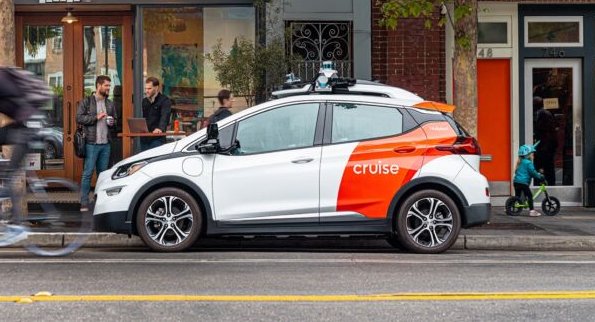Microsoft invests in $30 billion driverless car company Cruise

Microsoft has invested in Cruise, the General Motors driverless car unit, in a $2 billion funding round that gives the autonomous driving company a $30 billion valuation.
Cruise, which was bought by GM for “more than $1 billion” in 2016, when it had just 40 employees, now has almost 2,000 staff and accounts for more than 40 percent of GM’s $71.5 billion market capitalisation.
Its latest investment round puts it head-to-head with Waymo, the Google sister company, as the world’s most valuable autonomous driving start-up. Waymo raised $3.2 billion last year at an undisclosed valuation that two people said to the FT was “more than $30 billion.”
The investment in Cruise is Microsoft’s first major foray into driverless cars, although the software company does have a “connected car” business that supplies “digital chassis” and cloud services to the likes of Volkswagen, BMW, and Ford.
Satya Nadella, Microsoft chief executive, said that both Cruise and GM would use Microsoft’s cloud computing platform Azure “to help them scale and make autonomous transportation mainstream.”
Mary Barra, GM’s chief executive, said America’s largest automotive company would “realize even more benefits from cloud computing as we launch 30 new electric vehicles globally by 2025 and create new businesses and services to drive growth.” In early trading, GM shares rose over 9.5 percent after the news.
Existing investors GM and Honda also contributed to the latest round, but a specific breakdown was not disclosed. SoftBank’s Vision Fund is another investor in Cruise, having invested $2.25 billion in 2018, at a valuation of $11.5 billion and topping up its investment in 2019 when the company was valued at $19 billion.
“A year full of bad things”
The latest fundraising came after a difficult 2020, when COVID-19 halted the testing of driverless vehicles. Cruise was able to resume its testing in San Francisco by becoming an “essential service” providing food deliveries with a back-up-driver.
“That allowed us to stay on the road… while we made dramatic progress on simulation and off-road testing and development,” said Dan Ammann, Cruise’s chief executive officer, to the FT late last year. “Against a backdrop of a year full of bad things, we’ve been positively surprised by the ability to continue work, continue productivity.”
One year ago, Cruise unveiled its flagship ride-hailing vehicle, the Origin, an all-electric vehicle resembling a lounge on wheels with no steering wheel or pedals.
The bulk of its testing is done by a fleet of modified Chevy Bolts with a back-up driver, although late last year it received a permit to remove the safety driver altogether.
When these cars might actually be deployed for passengers is uncertain. Cruise had originally hoped to launch a driverless ride-hailing service in San Francisco in 2019, but the plans were indefinitely postponed.
In a sign of commercial progress, the company signed a deal in November to provide Walmart customers with contact-free delivery in the area of Scottsdale, Arizona, although a back-up driver will still be at the wheel.
In contrast to the soaring valuations of Cruise and Waymo, Amazon bought the rival self-driving startup Zoox last year for $1.3 billion, which is believed by some analysts to have similar technology to Cruise but a smaller headcount.
© 2020 The Financial Times Ltd. All rights reserved Not to be redistributed, copied, or modified in any way.
https://arstechnica.com/?p=1736175